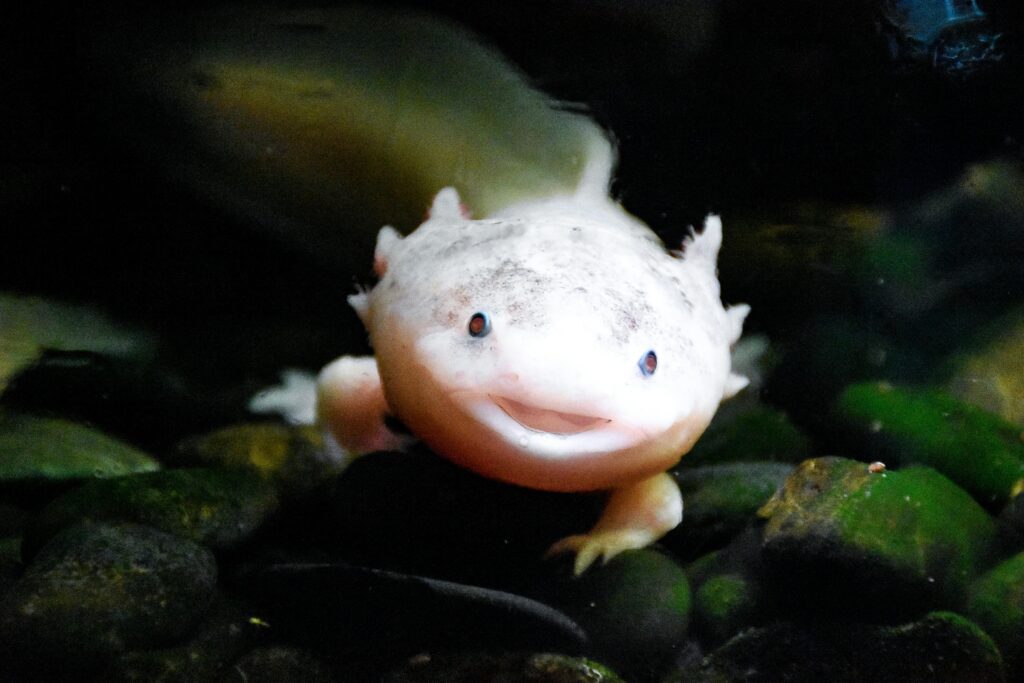axolotl amazing facts like regeneration,diet,breathing,unique skeleton,color pigment and more
Common Name: axolotl
Scientific Name: Ambystoma mexicanum
Type: Amphibians
Diet: Carnivores
Size: Up to 12 inches
Weight: 2.11 to 8 ounces
Average Lifespan: around 10-15 years

Axolotls (pronounced ak·suh·laa·tls) are aquatic salamanders that are found in the wild in only one place, Lake Xochimilco in Mexico City. These critically endangered amphibians are also popular as pets and are bred in captivity for scientific research due to their unique ability to regrow body parts. Habitat destruction and the introduction of invasive fish species have led to a dramatic decline in the axolotl population.
Regeneration: Axolotls are a key species in regenerative medicine research due to their ability to regenerate not just limbs, but also complex tissues like the spinal cord, heart, and even parts of their brain.
Diet: Axolotls are carnivorous, feeding on worms, insects, and small fish.
Conservation Status: They are critically endangered in the wild due to habitat loss and pollution.Save the Axolotl.
Breathing: They can breathe through their gills, skin, and lungs.
Sensory Capabilities: They have excellent senses of sight and smell, which they use to locate prey.
Unique Skeleton: Axolotls have a cartilage-based skeleton rather than a fully ossified one, which is more characteristic of larval amphibians.
Bilingual Name: The name “axolotl” comes from the Nahuatl language, combining “atl” (water) and “xolotl” (a type of dog or monster), reflecting their aquatic nature and unique appearance.
neotenic :-Axolotls are “neotenic” creatures, meaning they achieve sexual maturity without losing any of their larval features. So while many amphibians, like the salamander, will eventually develop lungs and live on land, axolotls keep their trademark feathery external gills and remain aquatic.
Place :- The axolotl’s native habitat is in dire straits.1 Once found in two high-altitude lakes in Mexico City, these aquatic amphibians are only found in the wild in one location: Lake Xochimilco in southern Mexico City.
Colour pigment:- The color pigmentation and patterns of axolotls are the result of four different genes.3 In the wild, axolotls are most commonly brown or black with specks of gold or olive. Like other salamanders, they can also adjust their color to better camouflage with their surroundings.

